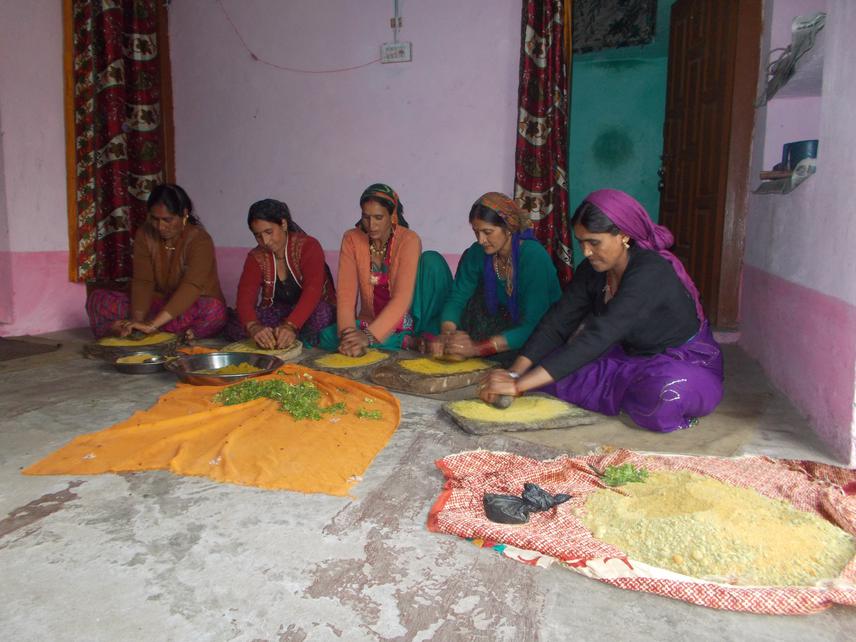Upma Manral
The study aims at conservation of natural resources and economic empowerment of rural communities of mountains in general and Kedarnath Wildlife Sanctuary in particular.

SHG members preparing green salt (a mix of table salt and locally available herbs and spices) to be sold as a Value-added product.
The Himalaya comprises of varied ecosystems which are unique and complex, thus, requiring conservation attention especially in the face of global warming and climate change. The Himalayan forests meet the local needs for sustenance as well as of income generation particularly the demand for fodder, and fuelwood which contributes significantly to the total household energy consumption. However, increased human population and resultant excessive extraction practices and various developmental activities have taken its toll on forests in the recent decades resulting in forest degradation. In rural areas of region, protected areas are also not untouched from anthropogenic pressure and have human presence within the landscape. In Kedarnath Wildlife Sanctuary, 12 villages are located inside the Sanctuary while 161 are situated along the southern boundary, whose inhabitants depend substantially on its resources. Fringe forests of the sanctuary and community forests within villages are an indispensable source of indirect earning, meeting households’ consumption requirements as they extract wood (timber and firewood) and non-wood (fodder, leaf litter, etc.) forest products and as pastures for livestock grazing.
Owing to the high importance of various phyto-resources for livelihood sustenance of forest fringe communities, the need for participation of local communities in conservation of these resources has brought interrelated issues of forest management and community participation in the forefront of conservation. Thus, it becomes imperative to understand the distribution and dynamics of forest phyto-resources to deliver a rational basis for planning and management decisions without which forest conservation would be impossible.
Thus, this study is an attempt to assess the availability of major phyto-resources, which contribute to environment income of households, the impact of various anthropogenic activities on forest condition and involvement of locals in conservation of these phyto-resources. There is a need to encourage local communities to take up livelihoods which are sustainable both socio-economically and ecologically. Under such circumstances, an approach is needed for sustaining livelihoods of people with focus on reducing their poverty and economic vulnerability to changes in the natural resource management regime. Information generated would be used in suggesting resource species and augmenting their plantation based on local requirements. Positive dimensions of traditional resource management systems will be identified and suggested to management authorities. Project activities will enhance natural, social and financial capitals of local communities through Self-help groups, Community conservation initiatives and Value addition.